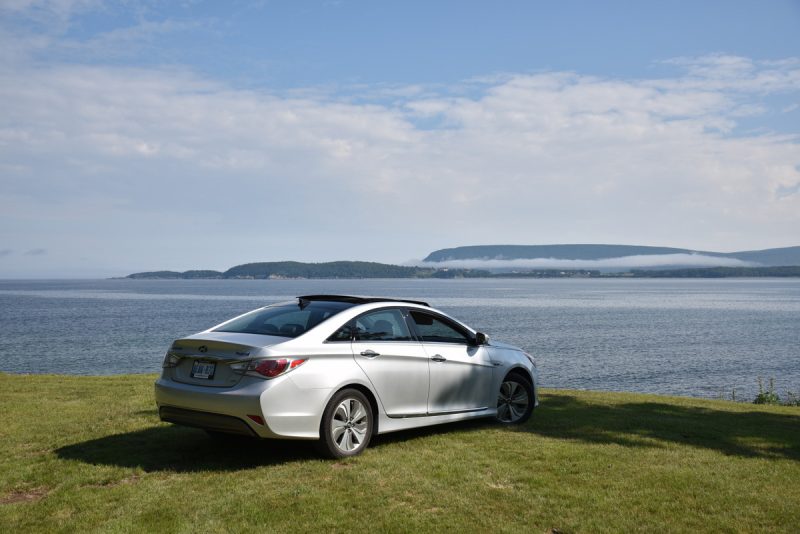
When I wanted to find out whether my 2013 Hyundai Sonata Hybrid saved me money compared to the conventional gas-only model, I used ChatGPT to crunch the numbers. Initially, the hybrid had a $4,000 premium over the non-hybrid version. Here’s how we factored in Ontario’s fluctuating gas prices and my car’s lifetime usage to assess whether it was a good financial decision.
Key Inputs
- Hybrid Mileage: 39.5 MPG (imperial)
- Non-Hybrid Best Case: 33.6 MPG (15% less efficient)
- Non-Hybrid Worst Case: 27.7 MPG (30% less efficient)
- Distance Driven: 200,000 km (124,274 miles), evenly spread over 11 years
- Gas Prices:
- 2013–2019: $1.30 per liter (average)
- 2020–2024: $1.70 per liter (average)
Step-by-Step Calculation
1. Fuel Usage Comparison
- Hybrid:
3,146.2 gallons × 4.54609 L / gallon = 14,306.5 liters - Non-Hybrid Best Case (33.6 MPG):
3,698.0 gallons × 4.54609 L / gallon = 16,810.9 liters - Non-Hybrid Worst Case (27.7 MPG):
4,486.8 gallons × 4.54609 L / gallon = 20,397.3 liters
2. Annual Fuel Usage Breakdown
Since the distance was evenly spread over 11 years (~18,182 km/year), the fuel usage for early and later periods is:
- Hybrid Fuel Split:
- 2013–2019 (7 years): (14,306.5 L / 11 years) × 7 years = 9,104.1 liters
- 2020–2024 (4 years): (14,306.5 L / 11 years) × 4 years = 5,202.4 liters
- Non-Hybrid Best Case:
- 2013–2019: (16,810.9 L / 11 years) × 7 years = 10,695.4 liters
- 2020–2024: (16,810.9 L / 11 years) × 4 years = 6,115.5 liters
- Non-Hybrid Worst Case:
- 2013–2019: (20,397.3 L / 11 years) × 7 years = 12,971.7 liters
- 2020–2024: (20,397.3 L / 11 years) × 4 years = 7,425.6 liters
3. Fuel Cost Comparison
- Hybrid:
- 2013–2019: 9,104.1 L × $1.30 / L= $11,835.3
- 2020–2024: 5,202.4 L × $1.70 / L = $8,843.9
- Total: $20,679.2
- Non-Hybrid Best Case:
- 2013–2019: 10,695.4 L × $1.30 / L = $13,904.0
- 2020–2024: 6,115.5 L × $1.70 / L = $10,396.4
- Total: $24,300.4
- Non-Hybrid Worst Case:
- 2013–2019: 12,971.7 L × $1.30 / L = $16,863.2
- 2020–2024: 7,425.6 L × $1.70 / L = $12,623.5
- Total: $29,486.7
Final Savings
- Best Case Non-Hybrid:
$24,300.4 – $20,679.2 = $3,621.2 saved - Worst Case Non-Hybrid:
$29,486.7 – $20,679.2 = $8,807.5 saved
Conclusion: Was the Hybrid Worth It?
Given that the 2013 Hyundai Sonata Hybrid initially cost $4,000 more than the non-hybrid version, the fuel savings of $3,621 to $8,807 show that the hybrid was a solid investment. Even in the worst-case scenario (lower fuel economy for the non-hybrid), the hybrid delivered considerable savings, especially during periods of higher gas prices from 2020 onward.
If your driving habits included a lot of city driving, where hybrids excel, the savings might be even more substantial. Over the 200,000 km lifetime, the hybrid wasn’t just a greener choice—it was also a smart financial one.
For anyone wondering about increased maintenance or service costs due to it being a hybrid, the car has been super-reliable. Other than a relay that had to be replaced under warranty, there have been no significant maintenance issues. This reinforces that the hybrid not only delivered on fuel savings but also proved to be a reliable vehicle over its lifespan.
